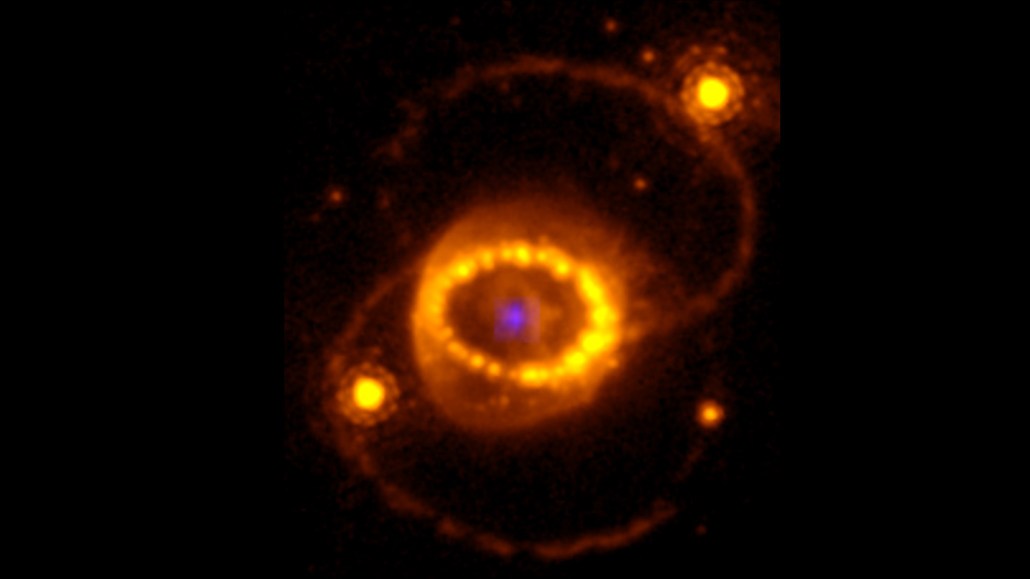JWST spies hints of a neutron star left behind by supernova 1987A
Do new observations solve a 37-year-old mystery of what happened in the explosion’s aftermath?

This composite false-color image shows the remnants of supernova 1987A. The rings of gas and dust were captured by the Hubble Space Telescope. The blue region marks where the James Webb Space Telescope detected light from highly ionized atoms, presumably surrounding an unseen neutron star.
J. Larsson